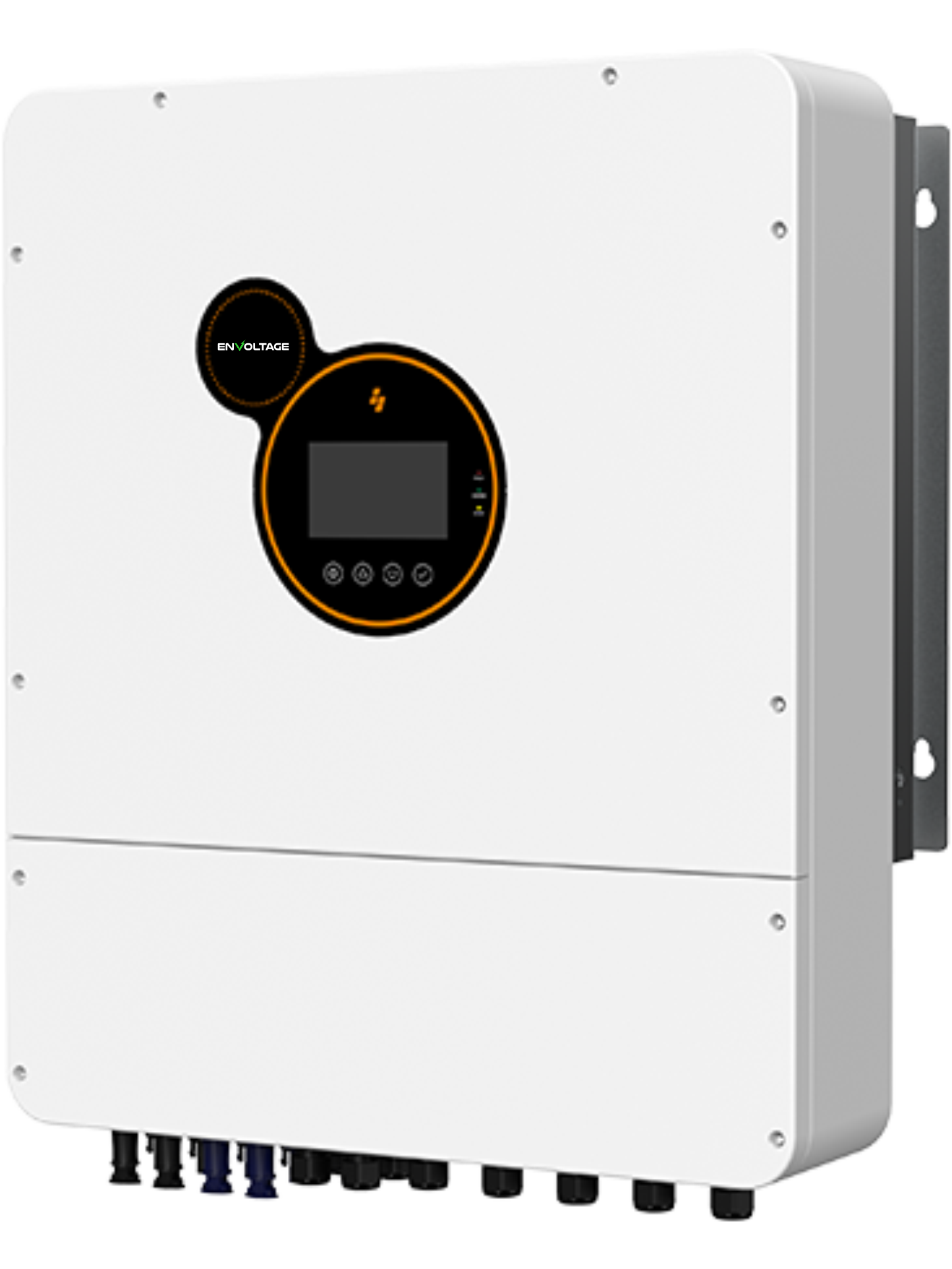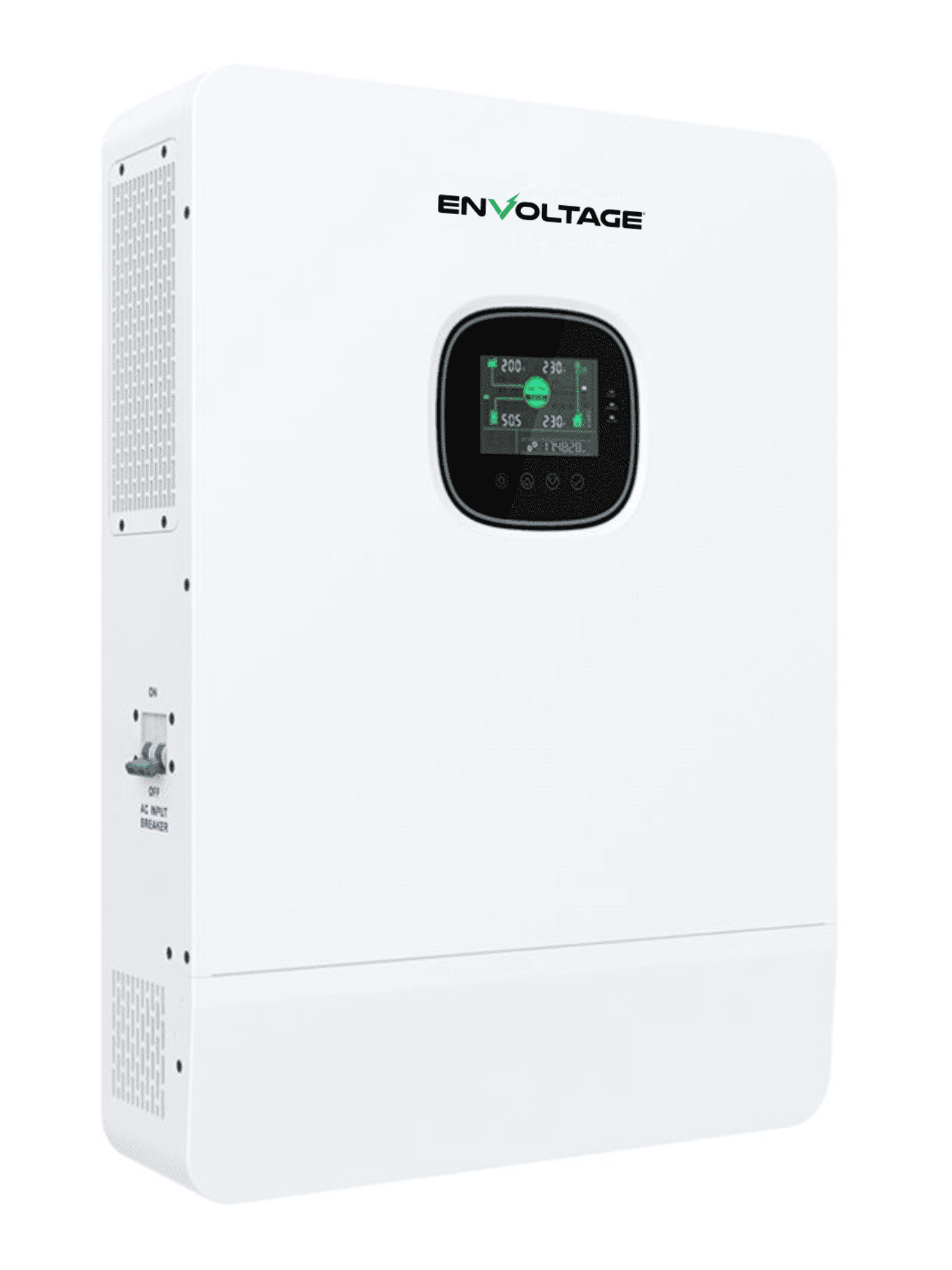In a typical PV system, the inverter/charger converts DC power from the batteries into AC that can power standard appliances and other energy loads, and converts AC into DC energy that can charge deep cycle batteries. This two-way exchange of energy is crucial for efficiently storing and using energy harvested by PV systems.
Hybrid inverter/chargers also allow multiple AC sources, such as a generator or the grid, to charge batteries. Whether you live off-grid and have cloudy days, or have utility power and the grid goes down, the inverter/charger can provide reliable and ready power.
Commercial & Industrial Inverters
Residential Inverters
Micro Inverters
Get a Quote / Learn More
Have questions or need help? Use this form to reach out and we will be in touch with you as quickly as possible.
Inverters in Energy Storage Systems: Types, Functions, and Applications
Welcome to our knowledge base on inverters for energy storage systems.
Inverters are the central component that makes stored energy usable — converting DC (direct current) power from batteries or solar panels into AC (alternating current) power for homes, businesses, and the grid.
Whether you’re designing a residential solar + storage setup or a commercial microgrid, understanding inverter types and functions is critical for safety, efficiency, and performance.
What Is an Inverter?
An inverter is an electronic device that converts DC power from batteries or solar arrays into AC power, which is used by most electrical equipment and the utility grid.
In energy storage systems (ESS), the inverter plays a dual role:
- Discharging power from the battery to supply AC loads or feed the grid.
- Charging the battery by converting AC power back into DC (in hybrid or bidirectional systems).
Modern inverters are “smart” — capable of grid synchronization, real-time monitoring, load management, and communication with battery management systems (BMS).
Key Functions of an Inverter in Energy Storage
- DC to AC Conversion: Converts battery or solar DC power into usable household or grid AC.
- Battery Charging (Hybrid Models): Converts AC back to DC to charge batteries from the grid or generators.
- Grid Synchronization: Matches voltage, frequency, and phase with the grid for safe export.
- Power Conditioning: Maintains clean, stable power with minimal distortion.
- System Communication: Integrates with smart meters, solar charge controllers, and monitoring apps.
- Protection & Safety: Includes overload, overvoltage, and anti-islanding protection.
Types of Inverters
1. String Inverters
- Common in solar PV systems without battery storage.
- Connect multiple solar panels in series (“string”).
- Converts DC solar output to AC for immediate use or grid export.
- Not ideal for shading or partial load conditions.
Best For: Simple solar-only systems or large arrays with consistent sunlight.
2. Hybrid (Battery-Ready) Inverters
- Combine solar inverter and battery inverter functions.
- Manage power flow between solar panels, battery storage, the grid, and household loads.
- Can charge batteries from solar or grid power.
- Offer seamless backup power in case of outages.
Best For: Modern solar + storage systems (residential and commercial).
3. Battery Inverters (Standalone)
- Used exclusively for battery systems (no direct solar input).
- Converts stored DC energy from batteries into AC power.
- Ideal for retrofits — adding storage to existing solar installations.
Best For: Energy storage retrofits and off-grid applications.
4. Off-Grid Inverters
- Operate independently of the grid.
- Provide AC power directly from batteries or solar inputs.
- Often include integrated chargers and generator inputs.
- Must handle peak loads (e.g., motors, appliances) reliably.
Best For: Remote locations, cabins, RVs, marine, or backup power systems.
5. Microinverters
- Installed on individual solar panels for module-level power conversion.
- Maximize efficiency and monitor performance per panel.
- Typically not integrated with large-scale batteries, but can pair with AC-coupled storage.
Best For: Small residential solar systems with shading or complex roof layouts.
Core Components and Features
- DC Input Terminals: Connects to batteries or solar panels.
- AC Output Terminals: Feeds household circuits or the grid.
- Charge Controller / MPPT: Optimizes solar energy capture (in hybrid inverters).
- Cooling System: Manages internal temperatures for reliability.
- Communication Interface: Wi-Fi, Modbus, or RS485 for monitoring and control.
- Display or Monitoring App: Real-time system data and diagnostics.
Inverter Efficiency and Performance
Inverter efficiency determines how much usable power you get from stored or generated energy.
- Peak Efficiency: Typically 95–98% for quality inverters.
- Standby Loss: Low idle power consumption is ideal for 24/7 systems.
- Power Factor Control: Ensures stable voltage and minimal harmonic distortion.
- Load Matching: Modern inverters intelligently adjust output for variable demand.
Safety, Standards, and Certifications
All inverters used in energy storage systems should comply with recognized electrical and grid safety standards, such as:
- UL 1741 / UL 1741 SA: U.S. safety standard for grid-interactive inverters.
- IEEE 1547: Interconnection standard for distributed energy resources.
- NEC Article 705 & 706: U.S. electrical code compliance for interconnected systems.
- CSA C22.2, CE, IEC 62109: International safety and performance standards.
Proper installation should include:
- Correct grounding and surge protection
- Adequate ventilation or cooling
- Appropriate circuit breakers and disconnects
- Commissioning by certified technicians
Selecting the Right Inverter
When choosing an inverter for your energy storage project, consider:
- System Type: Grid-tied, hybrid, or off-grid
- Power Rating (kW): Matches load demand and battery capacity
- Battery Compatibility: Verify voltage and BMS communication support
- Efficiency and Warranty: Look for >95% efficiency and 10+ year warranty
- Scalability: Modular or stackable designs for future expansion
- Smart Features: Remote monitoring, data logging, and energy management integration
Maintenance and Monitoring
Inverters are largely maintenance-free but benefit from regular system checks:
- Clean dust and debris from vents.
- Inspect for corrosion, loose connections, or overheating.
- Update firmware as provided by the manufacturer.
- Review performance data monthly via monitoring apps.
Common Inverter Brands in Energy Storage Systems
- SMA
- SolarEdge
- Enphase
- Fronius
- Growatt
- Sol-Ark
- Victron Energy
- Schneider Electric
- Huawei
- GoodWe
Frequently Asked Questions
What’s the difference between a hybrid inverter and a battery inverter?
A hybrid inverter handles both solar and battery inputs, while a battery inverter only manages battery energy.
Can I add a battery to an existing inverter system?
Yes — using an AC-coupled configuration with a compatible battery inverter or hybrid model.
How long do inverters last?
Typically 10–15 years, depending on brand, usage, and environmental conditions.
Can an inverter power my home during a blackout?
Only hybrid or off-grid inverters with backup functionality can provide power during grid outages.














